A survey conducted by BrightLocal among search professionals in the US has revealed key findings – such as growing optimism for this year and going forward. Jamie Pitman examines the details and compares revenues of agencies and freelancers, as well as looking into the most in-demand services asked for by local search industry clients.
Where is local SEO in 2018? After a year filled with big updates to Google My Business, and, at long last, some real care and attention being paid to its local search algorithm, Google has shown it’s serious about local in 2018.
In recent research published by BrightLocal, more than 1,000 US-based local SEO professionals gave their views and shared their experiences. This allows us to take a long view of the local search industry as a whole, zero-in on how the industry is performing, find out whether agency staff or freelancers are bringing in the big bucks, and learn a little about what clients really want from their SEO agencies in 2018.
Local search industry –the good news
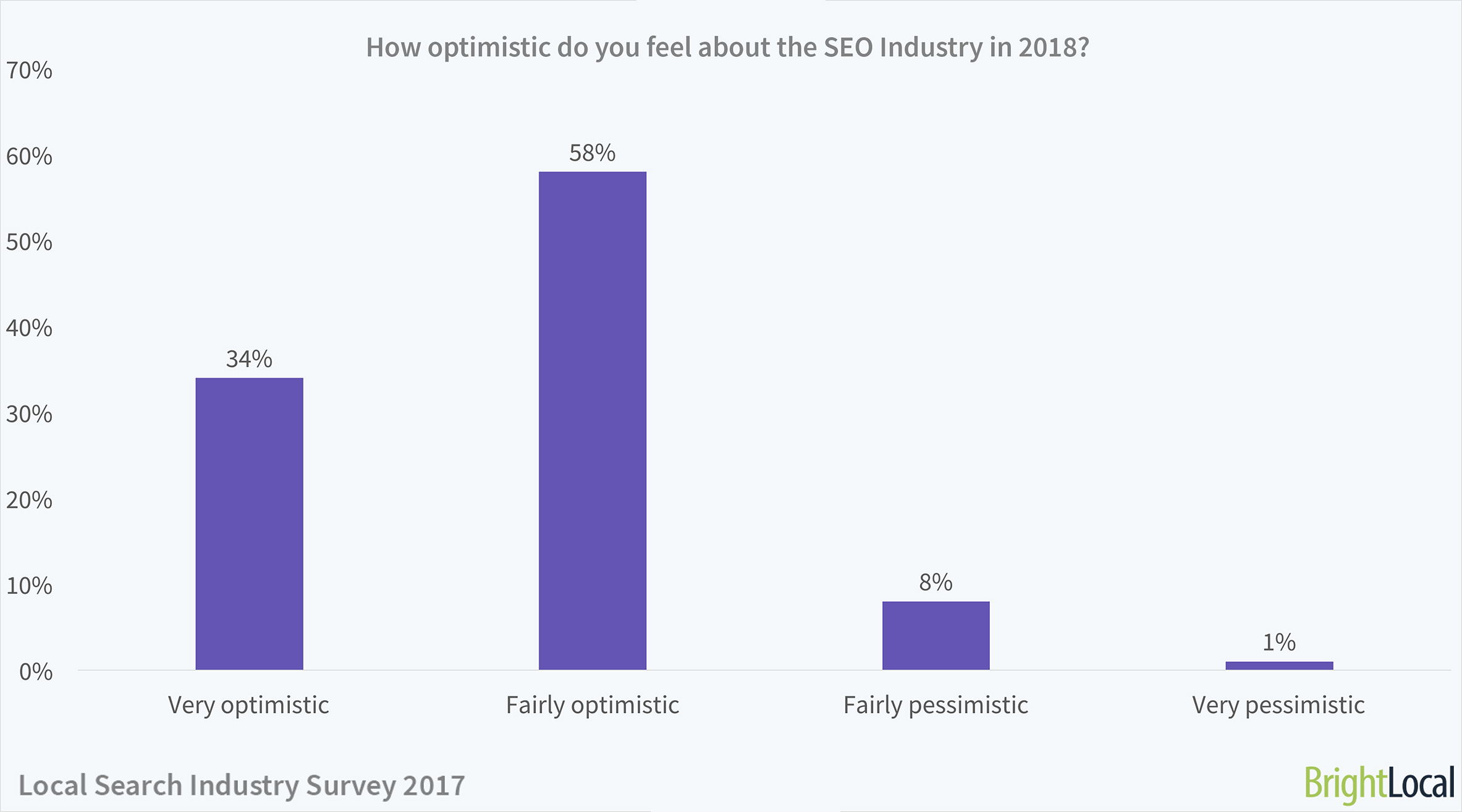
Let’s start with the good news: 92% of survey respondents feel optimistic about the SEO industry this year. Of them, an impressive 34% are ‘very optimistic’. However, the question remains whether an algorithm change (or perhaps the oft-teased release of Google’s mobile-first index) will take the wind out of the industry’s sails.
But there’s plenty of reasons to be optimistic. Google is in the midst of releasing a raft of updates to Google My Business, such as Google Posts and Google Q&A, all with the aim of allowing business owners to engage with searchers in new ways. Google’s renewed focus on developing the local search experience suggests 2018 is a year in which local SEO specialists have a lot of new toys to play with.
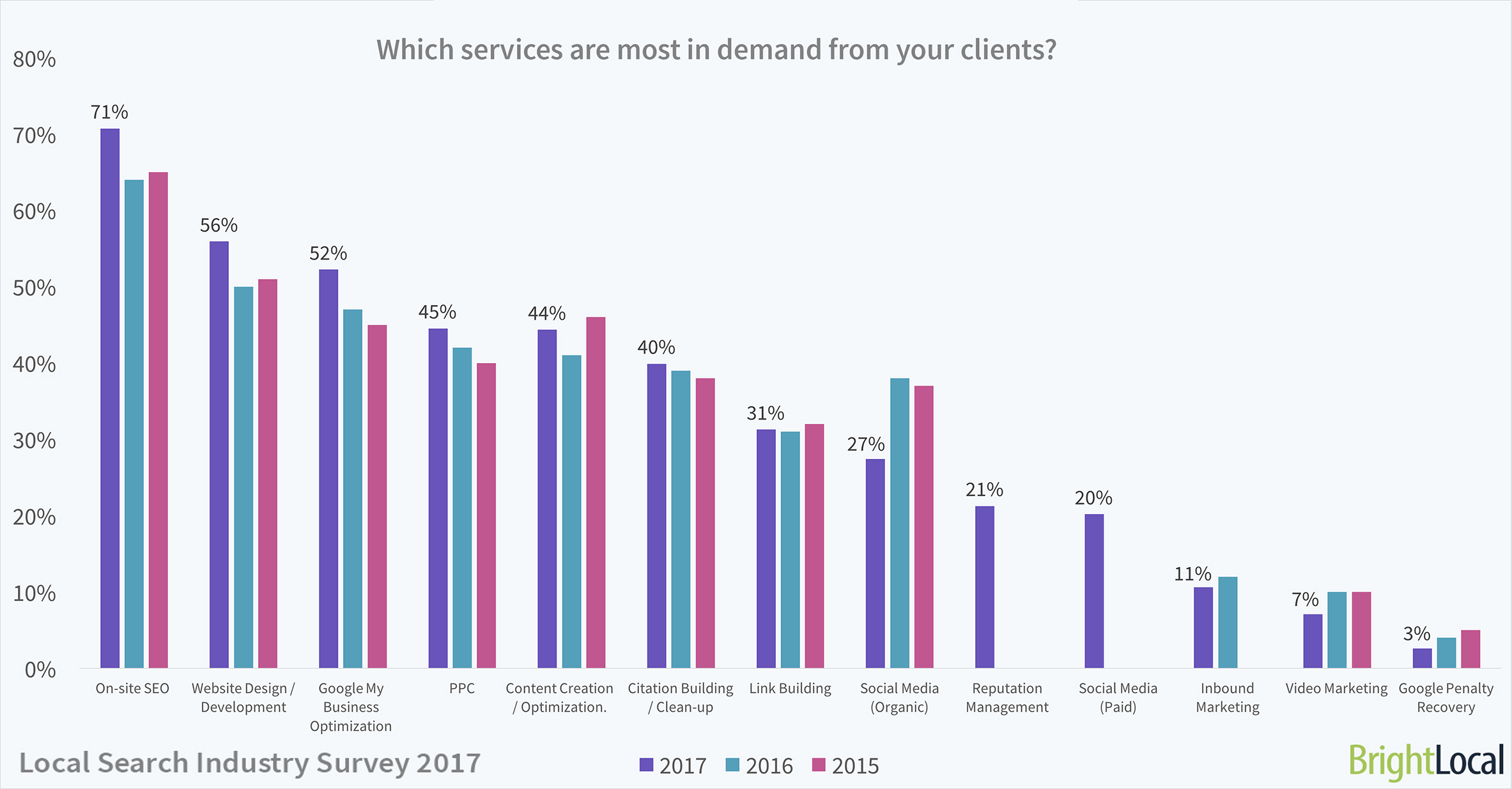
2017 saw large increases in the demand for on-site SEO, web design and Google My Business optimisation from local business clients. Also of note is that, despite social media platforms continuing to throttle organic impressions for business pages, paid social is less in demand than organic social media. Perhaps this will be the year that trend shifts, with business owners becoming more aware of the poor organic performance of their content.
Another surprise is how resistant local businesses have been to the rise of video marketing, especially given its noted effect on social media visibility. Whether the introduction of video uploads to Google My Business will remind business owners of the power of the moving image remains to be seen, but in the meantime, it’s clear that on-site SEO is at the front of their minds when choosing which digital marketing services to focus on.
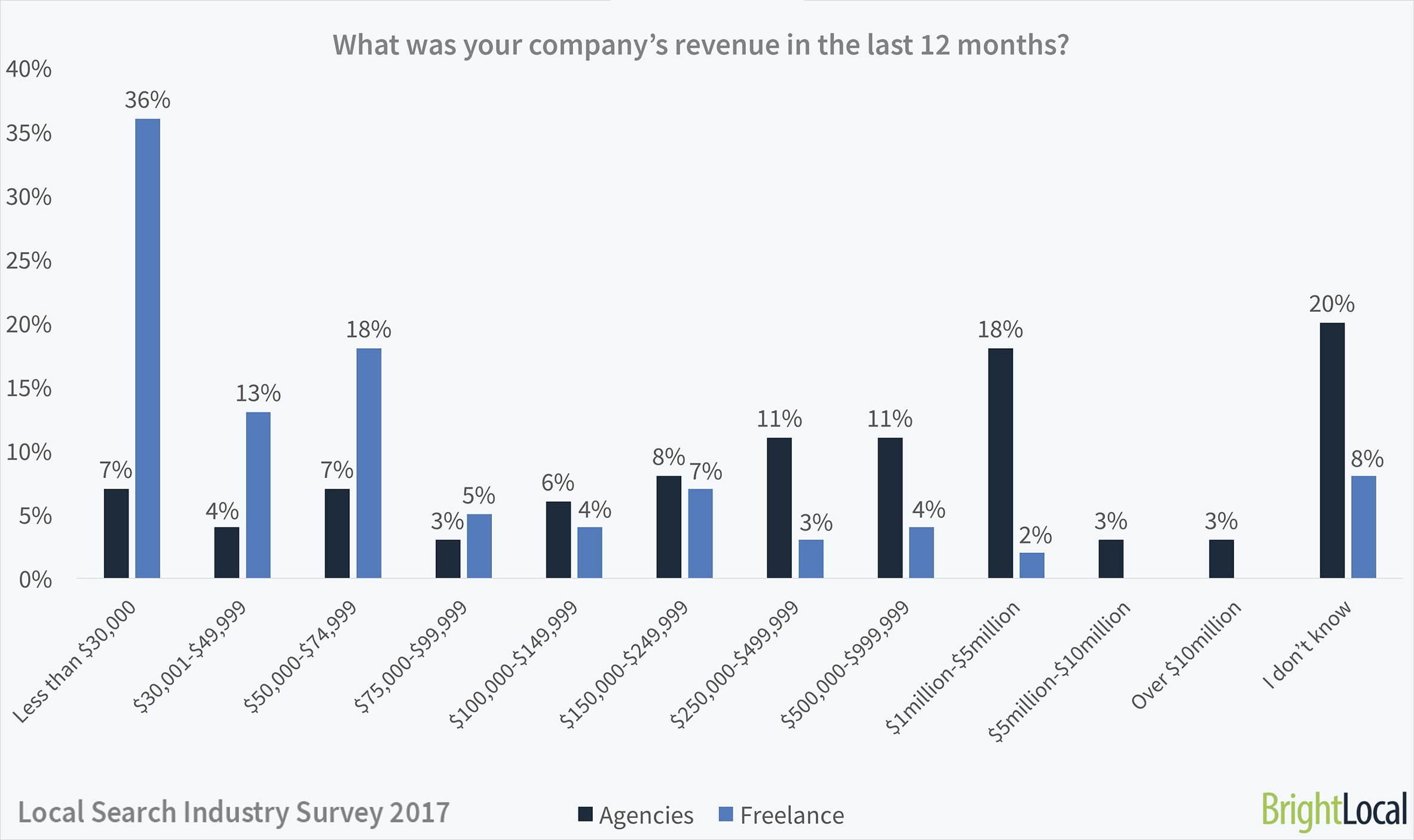
In terms of finances, there’s a clear disparity between revenue for freelancers and agencies, with more than a third of freelancers earning less than $30,000 last year. On the flipside, I’d like to meet the 2% of freelancers who earned more than $1 million and shake them by the hand!
Obviously, this disparity between revenues of agencies and freelancers is partly down to the ability agencies have to service larger clients and run bigger projects, but based on the below chart, it would seem that another reason could be that freelancers are charging significantly less per hour than agencies.
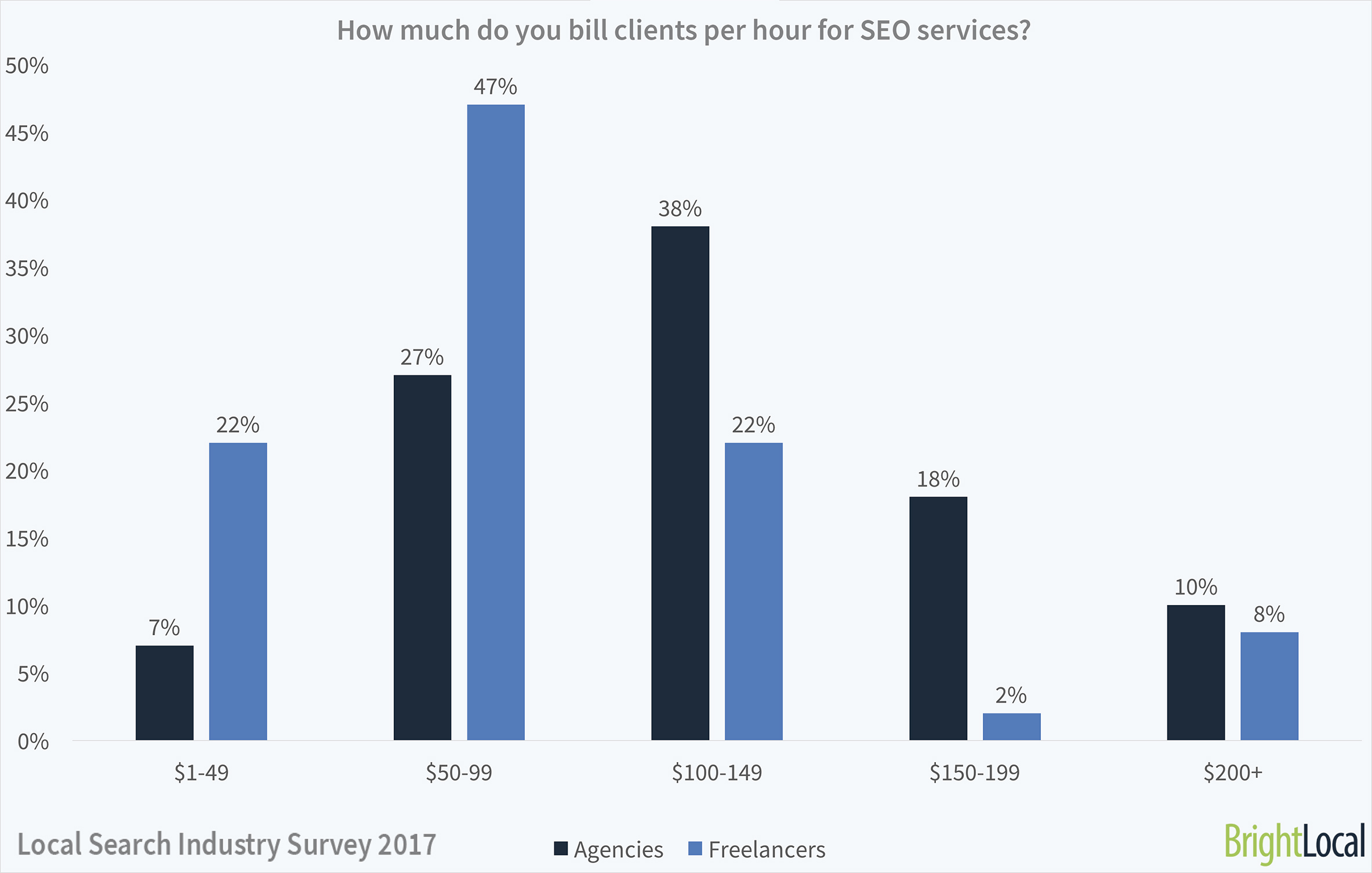
A massive 69% of freelancers charge below $100 per hour (compared to just 34% of agencies). Nearly a quarter (22%) of freelancers don’t even charge $50. This is surprisingly low compared to other professional services and suggests a ‘race to the bottom’ for freelancers looking to compete on price alone.
I’d say now is the time freelancers should start competing on value instead, especially considering the huge amount of value they can provide and, indeed, prove. Whether freelancers will take note of this and up their costs accordingly is something we’ll have to wait for next year’s survey to find out. One particular statistic that came as a major shock when carrying out the survey was that 35% of freelancers didn’t proactively contact a single lead in 2017. This would certainly suggest that plenty of them are running ongoing, marathon-not-sprint SEO campaigns for their clients (removing the need to expand) and are focusing on their niche rather than pushing to grow.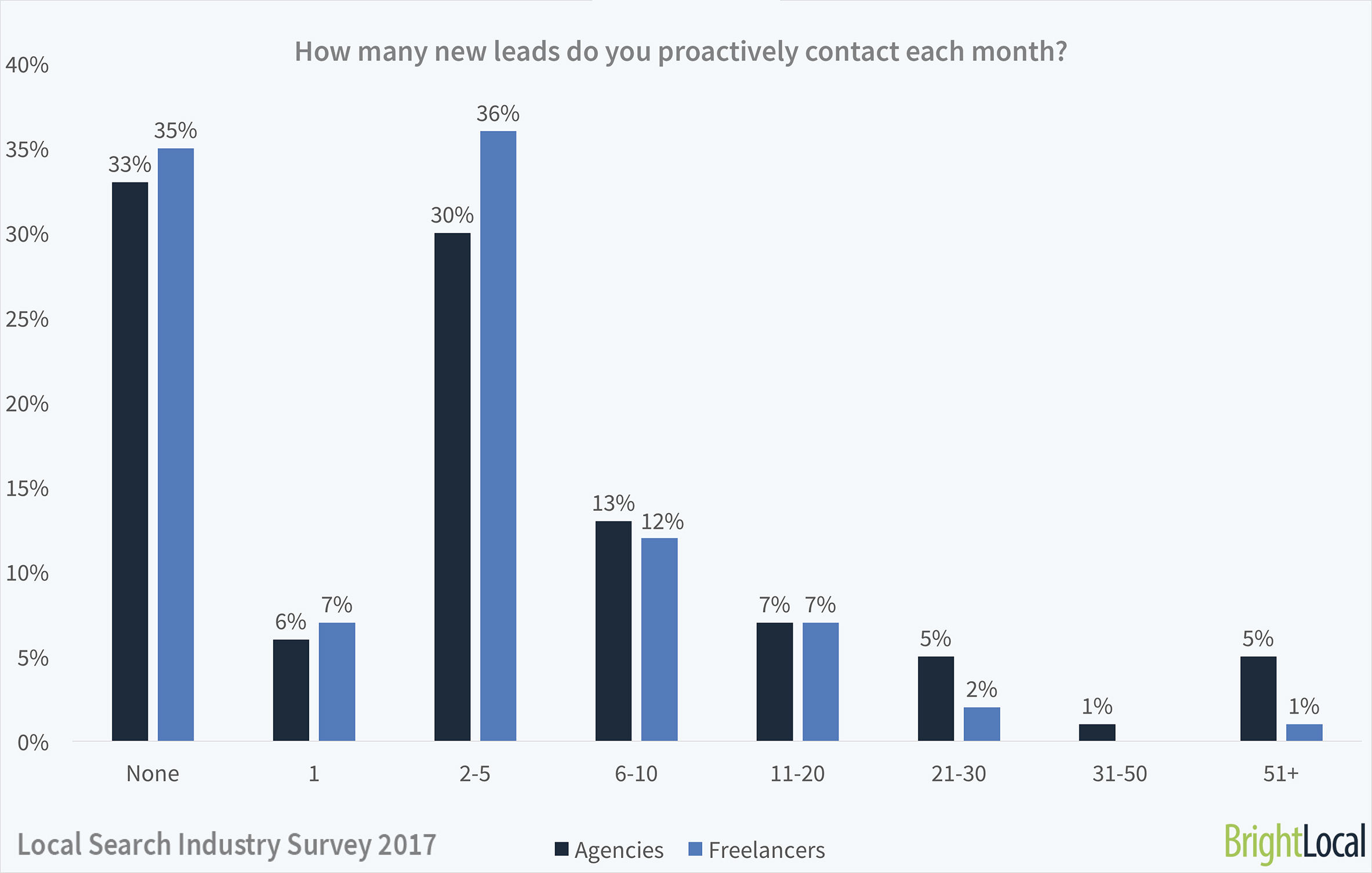
This also complements the optimism felt about SEO currently. It would seem that plenty of freelancers are getting by just fine with their stable of clients and are looking to continue this good work.
Although agencies aren’t far behind, with 33% of respondents saying they didn’t contact any leads, this is likely to be down to the positions of agency staff filling out the survey. Agencies tend to have separate SEO and marketing/sales staff, whereas one-man-bands often find themselves doing the selling and the work.
The 6% of agency staff that contact more than 30 leads per month might, in my opinion, want to dial it back a bit and spend a bit longer qualifying their leads and researching and understanding their prospects before reaching out to them, as forewarned is very much forearmed. Some say sales is a numbers game, and it can be, but without the added personalisation of the approach, you’re just going to be alienating people with ‘yet another’ sales email or call.
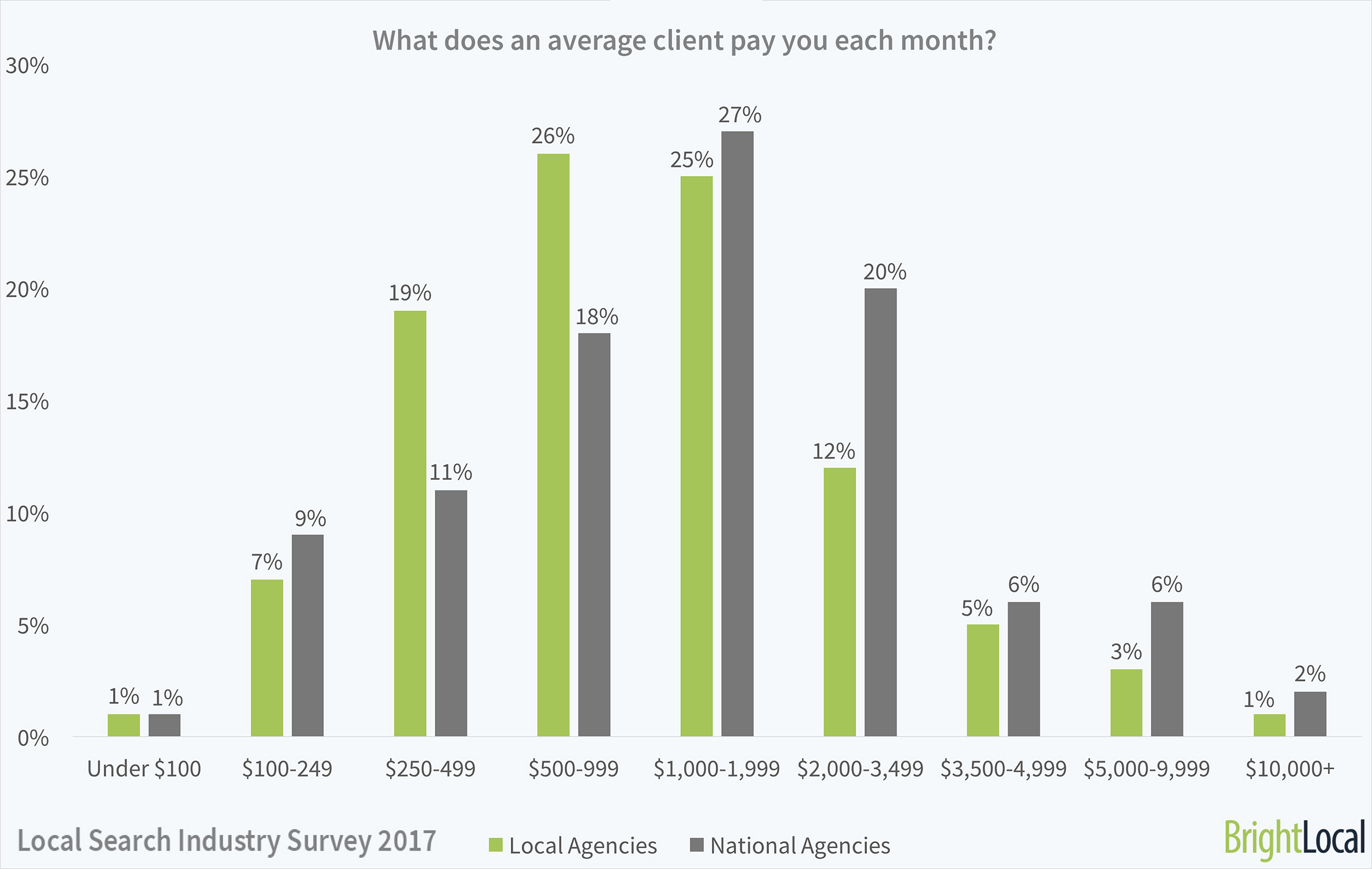
Looking at how local and national agencies are paid by their clients, there’s a definite trend to be seen: local agencies tend to accept lower monthly payments than national agencies. In fact, more than 50% of local agencies are paid less than $1,000 per month per client, while 61% of national agencies are paid more than $1,000 per client per month. Are local agencies missing an opportunity to pitch their services at a higher rate?
Inspiration for smaller SEO businesses
Going through this data, I’m struck by a consistent trend, and that’s of local agencies and freelancers pricing their services far, far lower than their national counterparts. Local agencies and freelancers are far more likely to be working with smaller, local businesses, but that doesn’t mean local business owners don’t have the budget to use on quality services, especially given how specialist local SEO is, when compared to standard SEO.
Local SEO professionals should re-evaluate the way they sell their services and do more to build their business propositions, in a way that reminds local business owners that, like them, being smaller means a more personal approach and the ability to make changes quickly in a way that big brands and national agencies can’t.
My hope is that, after reading this research, smaller local SEO professionals will be inspired to value their time and services more, and keep front-of-mind the fact that their size is an advantage when pitching for local businesses.
Here’s hoping 2018 continues to be a positive year for local SEO!
Have an opinion on this article? Please join in the discussion: the GMA is a community of data driven marketers and YOUR opinion counts.











Leave your thoughts